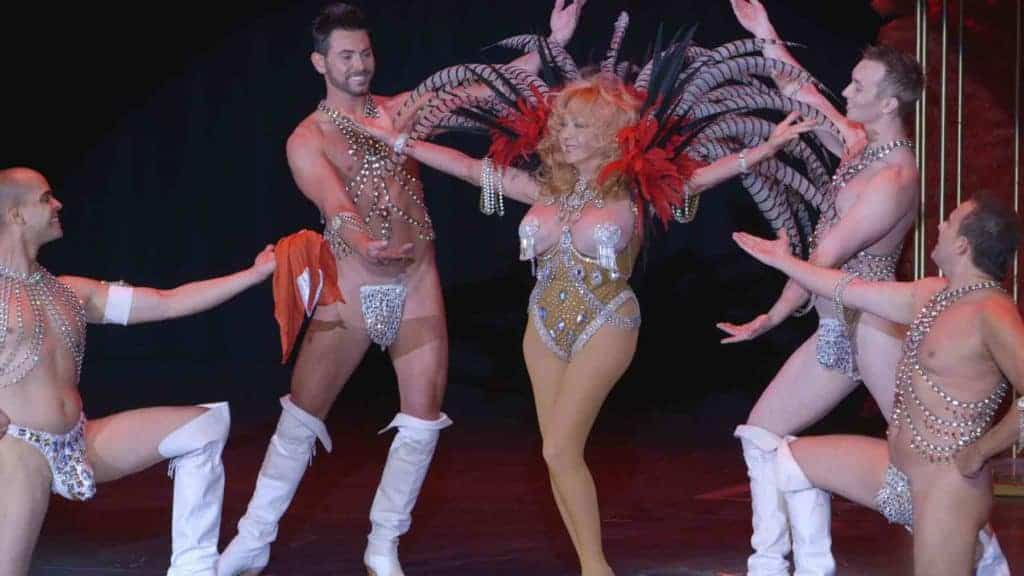Director Rama Rau’s League of Exotique Dancers follows several subjects who have been asked to perform at a special Burlesque Hall of Fame show in Las Vegas. The film screens at the Bloor HotDocs cinema on May 29, May 30, and June 2.

League of Exotique Dancers is a glitzy look at elderly Burlesque and exotic dancers — stars of the past from the late 1950s to mid-1980s — and how the profession has affected their lives today. Director Rama Rau follows several subjects who have been asked to perform at a special Burlesque Hall of Fame show in Las Vegas. Through recent interviews, Rau examines each participant’s thoughts on burlesque. However, League of Exotique Dancers lacks a wider perspective on the burlesque world, which prevents an in-depth exploration of the profession.
Rau captures the sex industry without resorting to victimizing the dancers or reducing them to hackneyed stereotypes. One of the only times sexual assault is mentioned is when college-educated Canadian burlesque performer Judith Stein describes how she escaped a group sexual assault at a fraternity by jumping out of a window. The film is clear that Stein was never a victim; instead, she used her intelligence to force her attackers to learn from their actions. When asked by the judge during the trial what she thought would be a good punishment for the perpetrators, she responded that these men should be forced to take two to three years of women’s studies courses.

The women depicted in the film are strong, sassy, sexually empowered, and unashamed of using their sexuality professionally. Unfortunately, Rau’s editing choices often reduce her subjects to caricatures. Rau focuses on moments when the subjects are particularly sexual and vivacious, so that their eccentricities seem to overwhelm any nuanced reflections on their profession. For example, one hispanic woman, Marinka, moans profusely, humps, grinds herself against a curtain to explain her dance routines. At times, Marinka and several of the other subjects hammed it up so much that I was worried the director included this so we could all laugh at these crazy old ladies dancing, rather than celebrating them.
Rau focuses on the glitz and glamour of burlesque — to the detriment of all else. There are beautiful aerial shots of Las Vegas, Hollywood, and San Francisco, and glossy close-ups of women parading across the stage in their sparkling and feathery outfits. Yet Rau’s myopic focus on burlesque as glitzy, expressive carnival means she doesn’t ask any awkward questions about what might make the job difficult. How does it feel to be constantly looked at? Did the dancers ever feel mistreated by their employers or club managers?

We never get a strong picture of the day-to-day life of these performers, in part because Rau doesn’t talk to people involved in the burlesque world outside of the dancers themselves: managers, male fans, bartenders, and servers. How did non-performers feeling about working in a burlesque club? Since Las Vegas was run by the mob, what was that atmosphere like for the dancers? It’s very surprising to have zero male interviews in a line of work where men are the major clientele. Rau doesn’t even try to answer any of these questions, which makes the film’s perspective too celebratory and one note.
A film about burlesque can’t be all feathers and fluff. It needs to examine all aspects of the art form to add nuance and humanity to the film’s subjects. Luckily, Canadian performer Judith Stein’s perspective alone is worth a viewing of League of Exotique Dancers.

